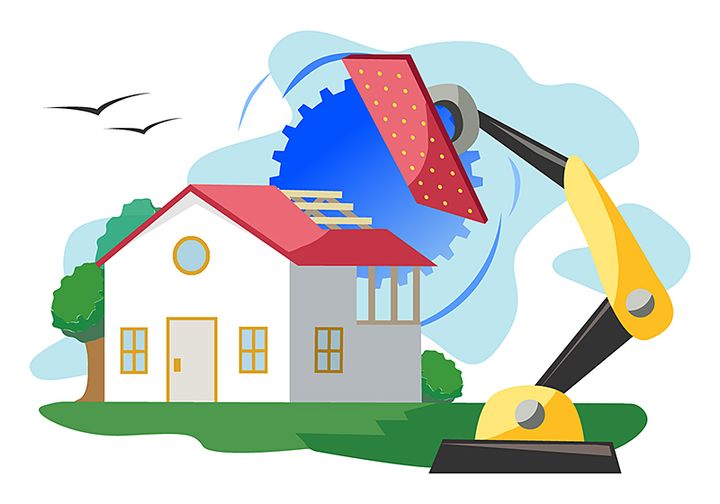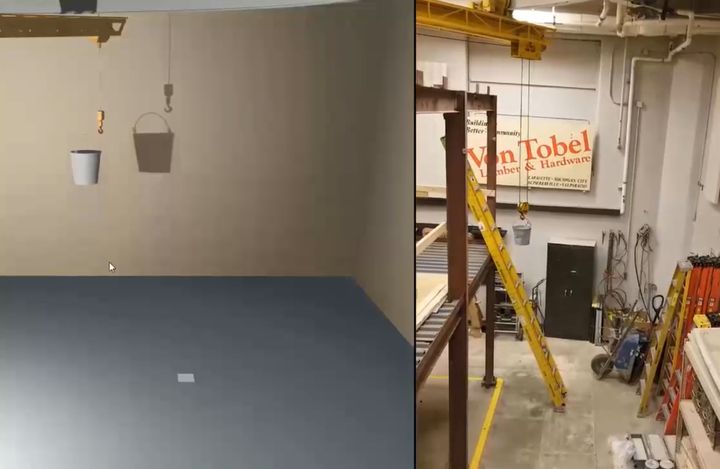
A news release from Purdue University indicates the institution has been quietly developing new methods of automated construction.
I believe their work will align well with today’s highly constrained construction 3D printing processes. Typical construction 3D printers of today are merely concrete extruders that have big scale. They are able to, in many cases, produce walls and foundations easily and quickly with minimal human involvement.
While that’s great technology, there remains quite a bit more effort required to complete the building. Concrete extruders don’t lay pipes, fit windows, tape ducting, feed wiring, paint walls, place tiles, install finishings or literally anything else involved in finalizing an occupiable space.
In spite of those massive limitations, some unscrupulous construction 3D printing companies still proclaim they’ve “3D Printed A Home In 24 Hours!!!!”, but nothing could be further from the truth: they’ve only put down the concrete portions of the project in 24 hours… maybe.
The remainder of these projects must be undertaken by traditional tradeworkers, and the advantages of construction 3D printing are sometimes swallowed up by the remainder of the budget.
There are still many issues involved in construction 3D printing, and we asked the opinion of an actual concrete construction worker on this topic last year.
If you really want to 3D print a home in 24 hours there must be a significantly greater amount of automation involved. This automation must replace the tradespeople’s work in every way, and that’s an extraordinarily complex puzzle. Each trade has its own body of work that would somehow be digitized and automated.
The form of that automation has yet to be determined. However, in 2018 I proposed construction 3D printing enhancements that could help, including:
- Multimaterial capability
- Automated component installation
- Specialized robots
- Supplies vendor
- Management software
- Design software
The second item on my list, automated component installation, seems to be the focus of the research being undertaken by the Automation and Intelligent Construction (AutoIC) Lab at Purdue Polytechnic.
Their news release says:
“Purdue University innovators developed and are testing a novel construction robotic system that uses an innovative mechanical design with advances in computer vision sensing technology to work in a construction setting.”
Assistant Professor Jiansong Zhang explained:
“Our work helps to address workforce shortages in the construction industry by automating key construction operations. On a construction site, there are many unknown factors that a construction robot must be able to account for effectively. This requires much more advanced sensing and reasoning technologies than those commonly used in a manufacturing environment.”
Purdue said:
“The Purdue team’s custom end effector design allows for material to be both placed and fastened in the same operation using the same arm, limiting the amount of equipment that is required to complete a given task.”
I did a quick search for a paper associated with the news release, but there didn’t seem to be one. However, I did find a series of papers produced by the Purdue lab that indicate they’re working diligently on the problem.
Eventually I realized what they already know: the problem is NOT in the hardware, it is in the software. They’re trying to create software, sensors and hardware that can actually understand a given construction scenario, and once that’s done it would be possible to take action — like installing a building component, for example.
A competent system would be able to visually recognize components on hand from the supply system and match them with digital components in the Building Information Management (BIM) system. It would know where, when and how they need to be installed.
The Lab’s work includes AI, imaging sensors to interpret real-time data and such. For example, here is a screenshot of a video they produced that attempts to simulate the operation of a crane. On the left is the simulation, and on the right is the actual crane in operation:

The gist of all this to me is that the ability to reliably install arbitrary components with automation on a construction site is a devilishly challenging problem that literally requires the automation system to “understand” its operational space and everything in it.
Because of those challenges it seems to me that we will likely not see generalized construction systems appear soon, aside from “cooked” examples where, for example, the design is fixed in advance. That’s more like manufacturing than general construction of arbitrary designs.
Nevertheless, it is excellent news to know that there is at least one group that is delving deeply into these issues.
Via Purdue and Purdue Polytechnic
